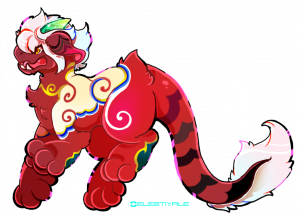I don’t think there is necessarily an amount of practice time that is considered obsessive. I don’t think there’s a such thing as too much practice, but realistically, practice time must be managed well, or else it becomes unhealthy when a student fails to fulfill their other needs or obligations, regardless of whatever is taking up their time happens to be. On the other side of that, I don’t think I can say for certain that there’s an exact amount of time that it takes to create a sophisticated amount of work. For me personally, I’d say around 3-6 hours, but that could be faster or slower depending on what the project is, and I’m sure that most people have very different necessary times as well. To put it in arbitrary terms, I’d say a student needs at the very least, enough time to come up with an idea, tweak the idea, create it, critique it at least once, and then revise it, however long that process may take for them personally. I feel that I am situated in somewhat of a middle ground between both the minimum and maximum amount, depending on the project. I’m always drawing and designing, and thinking about my ideas and creations, but I wouldn’t say it’s to an unhealthy extent.
Much like my opinion on how much time is too little or too much time, I feel that the idea of what is considered next level is also very subjective; it depends on the amount of experience of the designer. I would consider a next level design a design that builds on previous design experience and pays attention to details that are usually overlooked in favor of default-y settings. I would say the next level on my map would be a better use of color and space within the composition, and I might try to segment the backyard into more, more specific sections.
The most meaningful feedback I got on my map was the idea of it. At first I was thinking of using an idea where I would track where my dog liked to walk or stop whenever I walked her, but was later given the idea to narrow it down to a map of my backyard, since tracking her every decision would have been difficult. I used that feedback to structure the way I made the map, and instead of making it a map of my neighborhood, it’s a map of my backyard.
The most challenging part of my map was trying to figure out how to incorporate why my dog visited the places she visited into the map. In the end, instead of a written explanation like I had originally planned, I included least and most shaded areas on the map to indicate that she visited there because it was an area with a lot of shade. The easiest decision I made was deciding how I wanted to layout the map, since it’s just a representation of my backyard.
Most of my artwork is not school related, and I enjoy creating character designs. Here are some examples of my work.
I think I tend to focus a bit too much on my personal work. I enjoy all types of design, but because character design is most interesting to me, I find myself paying more attention to it more than any other type of design. However, my character designs impact the other work I do, because I have gained most of my art experience while working with these designs, which influence my design choices. In Image methodology, my portfolio app project was influenced by the design of my own watermark, as the logo makes use of the symbol. This watermark’s design is a representation of one of my character designs, and was also created in this graphic design course.
The most ideal classroom environment is one that promotes effective class discussion and critique, where everyone feels comfortable enough to share their thoughts freely. I felt that I was able to be a contributor in this class in the manner that I described above. I believe that I flourished the most while I was working on a project after it had been critiqued, because during those times, I felt a heightened motivation to improve upon my work with the new ideas and suggestions I had been given.






